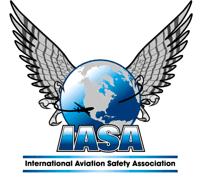|
|
|
|
|
|||||||||||||||||||
The inflight fire that led to the Sept. 2, 1998, crash of Swissair Flight 111, and deaths of 229 people on board, likely started with electrical arcing "involving one or more wires," according to the final accident report released last week by the Transportation Safety Board of Canada. TSB investigators believe the arcing was associated with inflight entertainment network wires, but cannot be certain because other wiring in the immediate area could not be identified. The arcing ignited the metallized polyethylene terephthalate material covering thermal acoustical insulation blankets above the right rear cockpit. Inadequate certification standards for material flammability allowed for use of materials that could ignite, sustain or propagate the fire, according to the TSB. The Flight 111 crew's ability to detect the fire and identify its source was severely limited, as was their ability to combat it. No smoke/fire detection and suppression devices were located near the source of the fire, which was in an inaccessible area. In addition, the crew had no firefighting procedures to put into play; regulations in effect at the time did not require such a plan. Failed end caps on air conditioning ducts fed a steady supply of air to the fire as aircraft primary flight displays failed and heat, smoke and fumes filled the cockpit. Crew loss of spatial orientation resulted in the aircraft's collision with water, 5 naut. mi. southwest of Peggy's Cove, Nova Scotia. According to TSB Chairman Camille Theriault, the Flight 111 inquiry was "the largest, most complex aviation safety investigation" the board has undertaken. It yielded 23 safety recommendations, including nine in the final report. The latest include improving the testing and flammability standards of in-service thermal acoustical insulation materials and--as far as aircraft electrical system is concerned--requiring additional steps in the certification of add-on systems. İMarch 31, 2003 The McGraw-Hill Companies Inc.
Correspondence |
Market Focus |
Industry Outlook from this link
|
||||||||||||||||||||||
|
|
| |||||||||||||||||||||


